Shugborough
Princess Anne would turn up in a battered old Land Rover and say, “I’m here to see Patrick.” … She held the speed record for riding a scooter around the grounds.
Our guide at Shugborough Hall has been working there for twenty years, and had many stories of when it was still occupied by the Earls of Lichfield. The fifth earl, Thomas Patrick John Anson, otherwise known as Patrick Lichfield, lived there until his death in 2005, though the house has been owned by the National Trust since 1960. Patrick Lichfield was a successful photographer, doing everything from royal weddings to the Pirelli calendar. Celebrity guests were common at Shugborough. This is the bed Princess Margaret liked to sleep in.
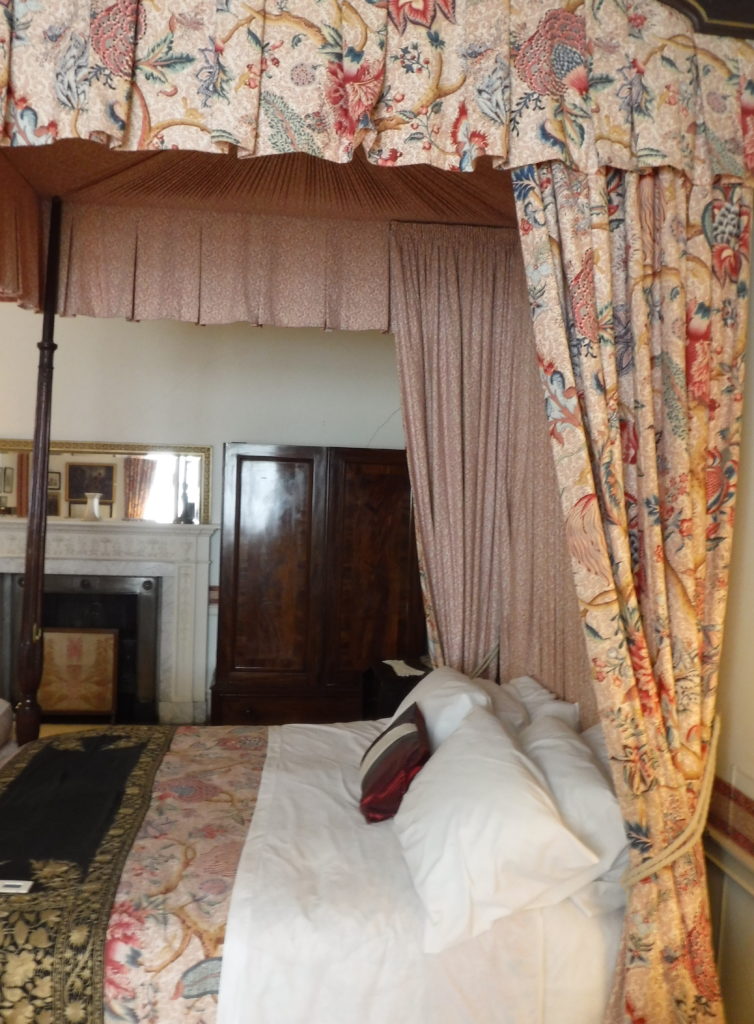
After the house went to the National Trust in lieu of death duties, the Lichfields maintained a bijou little thirty-seven room flat there so there was still plenty of room for entertaining. Patrick’s faithful butler still lives in a house in the grounds, and pops in from time to time to see to it that the National Trust are looking after the boss’s clothes properly.
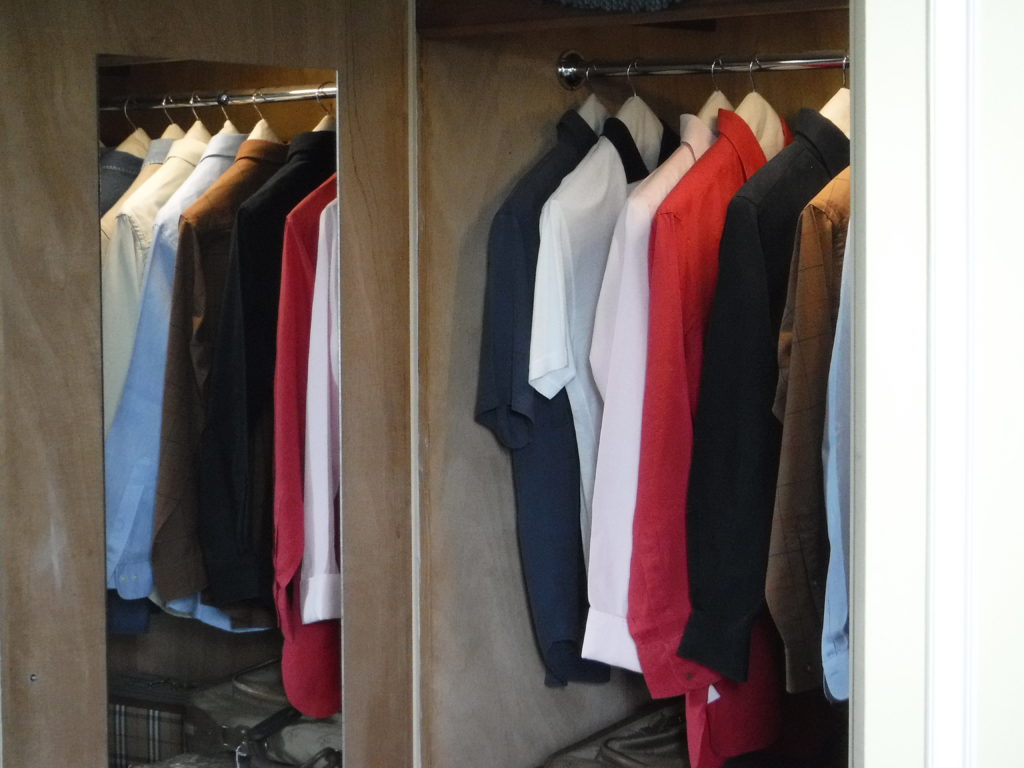
Though the estate was first purchased by the Anson family in 1624, it wasn’t until the 1700s that it took it’s present extravagant form, thanks to two brothers, a naval officer who made all the money and a gay guy obsessed with decorating who spent huge chunks of it on the house. Check out this ceiling.
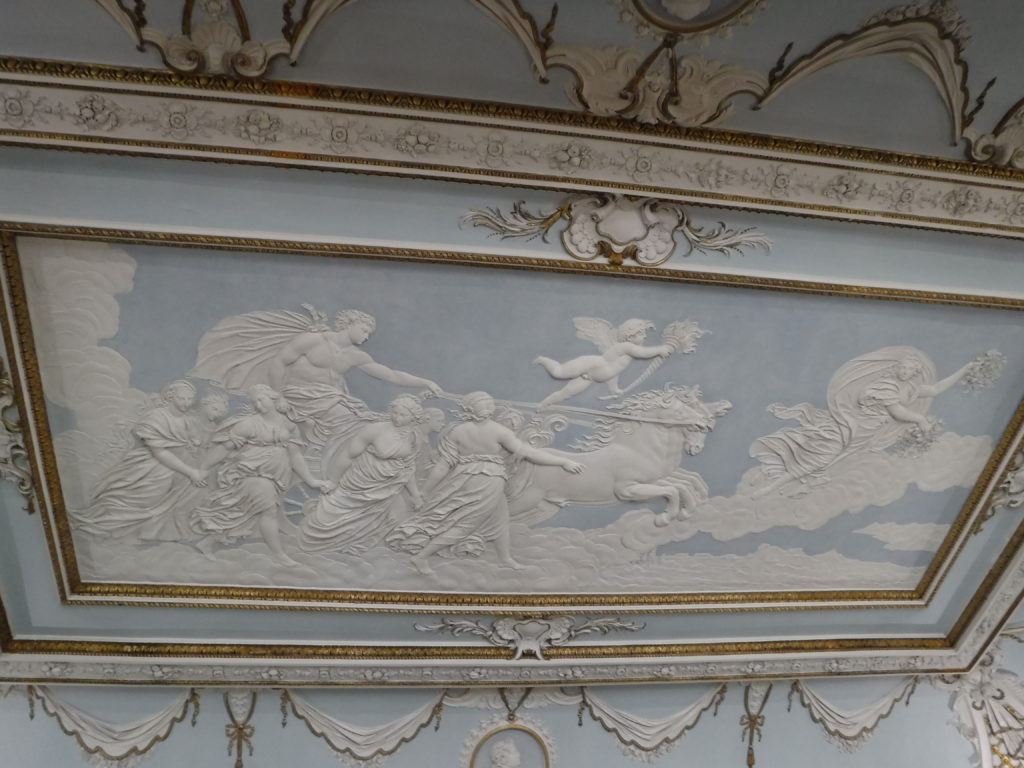
Does that set off your gaydar or what? Thomas Anson imported a plasterer from Italy to do that. When his friend Josiah Wedgwood came to dinner and saw the ceiling, he stole the idea for the jasper ware that is still made by Wedgwood today.
Back in the 18th Century, if you were a naval captain and you captured an enemy ship, you received a share of the value of the ship. In an otherwise disastrous circumnavigation of the world during the War Of Jenkins’ Ear, Commodore George Anson managed to capture a Spanish treasure ship loaded with over a million pieces of eight. That’s the large silver coin that inspired the US silver dollar. The coins might be cut into eight pieces to make change, which is why a quarter is sometimes referred to as two bits. For Patrick O’Brien fans, here is the sword that the Spanish captain surrendered.
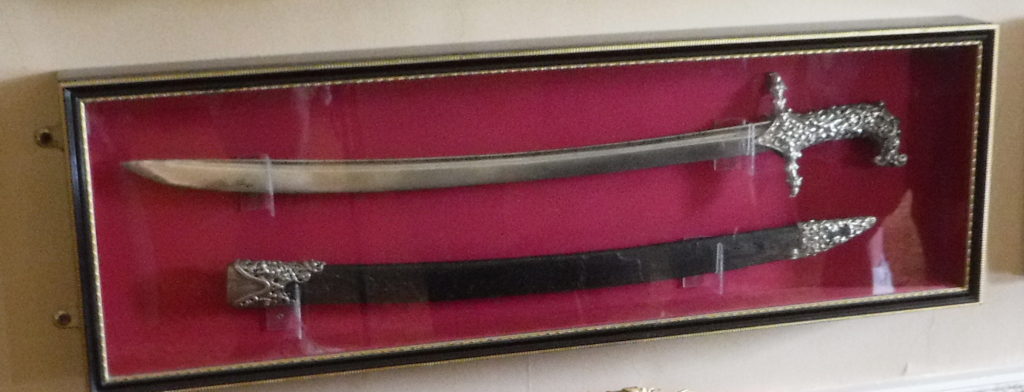
George Anson continued to rise in the Navy, capturing further vessels at the battle of Finisterre. Eventually he was promoted to First Lord of the Admiralty, where he introduced such astonishing reforms as giving sailors uniforms to wear, and not whipping them without a trial first. So, yes, he’s the guy who invented navy blue. If his brother had been designing the uniforms they would probably have been aqua with silver trim and just a touch of chartreuse at the cuffs.
Here’s a couple more interior shots.
The formal drawing room.
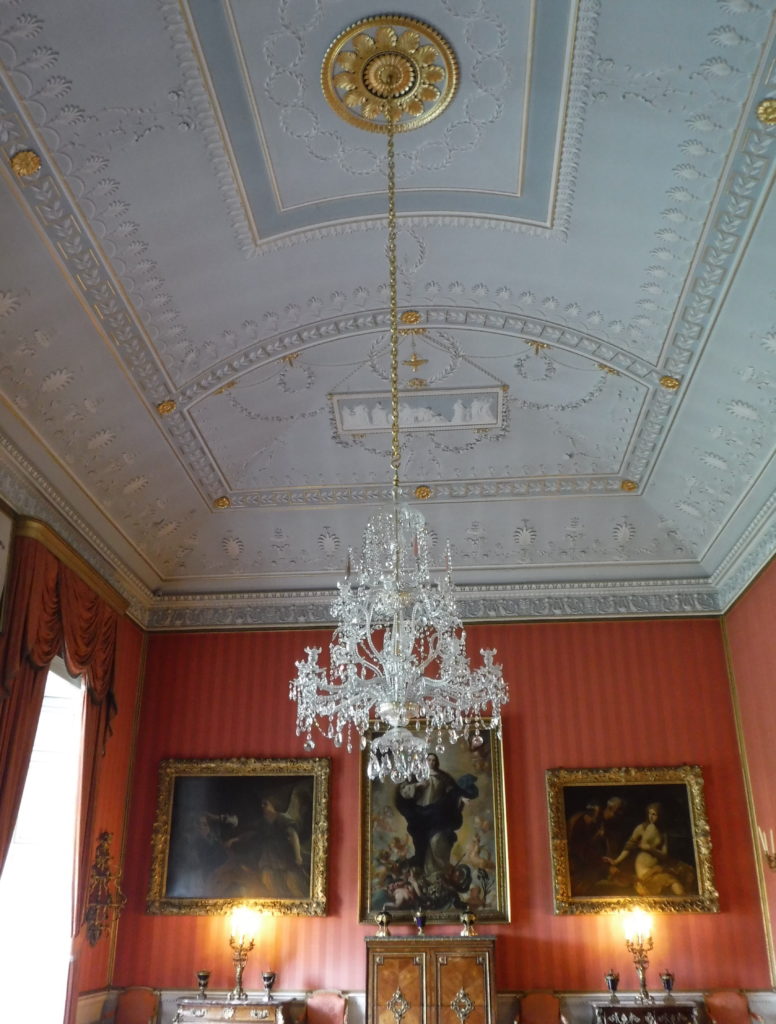
There was also an informal drawing room for the family to use.
The gardens are a mixture of the highly formal style close to the house, and the more ‘natural’ style of the mid-eighteenth century further away. They are littered with follies and ‘ruins’.

I’m not sure what those cherubs are supposed to be doing, but I probably don’t approve.
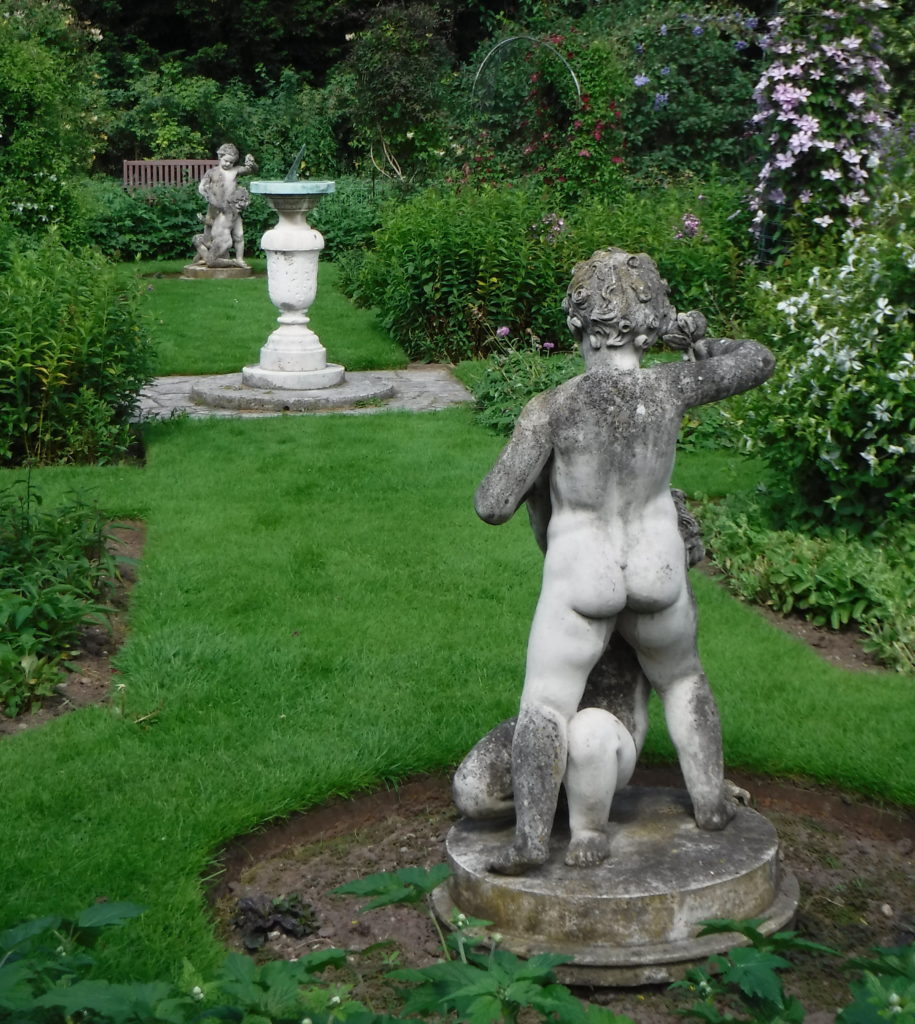
This is a cherub attempting to impersonate a battle swan, but the swan has put its head on backwards to make it more difficult.

I don’t give much for that cherub’s chances.
OK, on to other stuff. It was warm today, around 80F. The canal was suspiciously quiet this afternoon. I think the British consider 80F to be too hot for any activity as strenuous as steering a canal boat, in that it involves standing up. To be fair, air conditioning is pretty much unknown here, and for most people the summer cooling system consists of switching from bitter to lager. Tomorrow it is forecast to get to 90F or so before thunderstorms, a deluge of rain, and probably a plague of locusts. This summer is cursed, I tell you.

It took us a while to work out what this is.
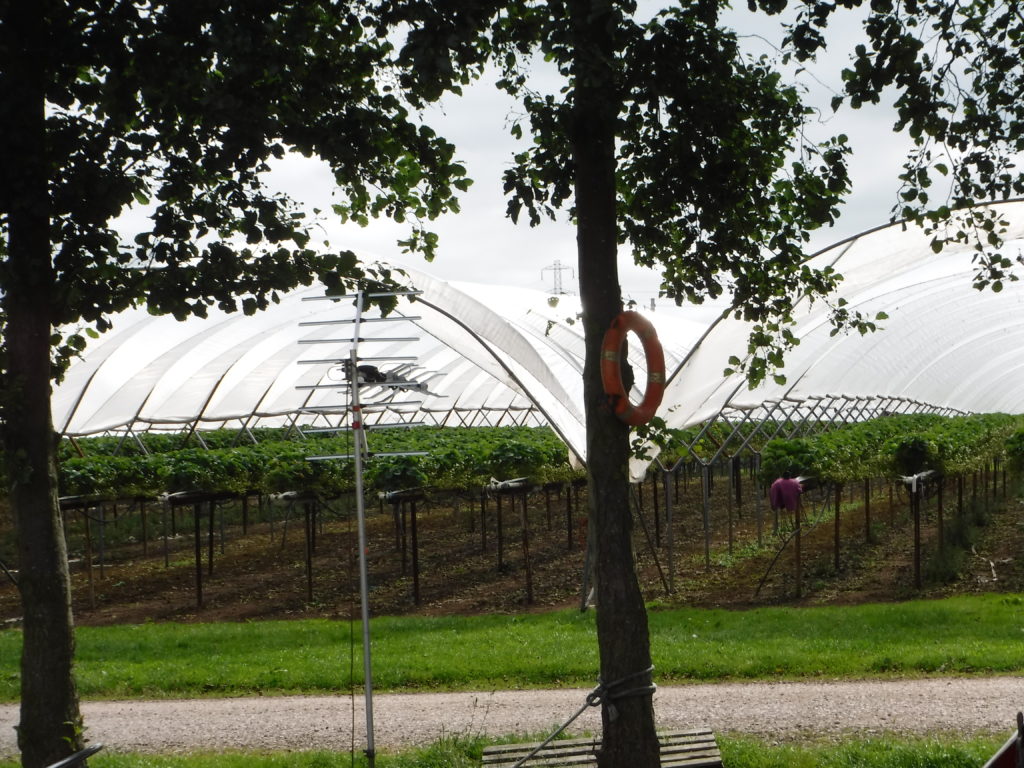
Raised beds on stilts? It’s a pick-your-own-strawberries farm, where you don’t have to bend down to pick the strawberries. What’s more, you can do it in the rain without getting wet, which seems like an ideal form of farming in this country.
I almost forgot the Essex Bridge. Remember how Elizabeth I and the second Earl of Essex had a thing going on? Before he f*cked up in Ireland, was placed under house arrest, attempted a rebellion, and was executed for treason – but enough spoilers. While they were still sort of an item, he is supposed to have wanted to make it easy for her to ride her horse from his hunting lodge on one side of the river to the hunting on Cannock Chase on the other side of the river, so he built this bridge which is just wide enough for a horse.
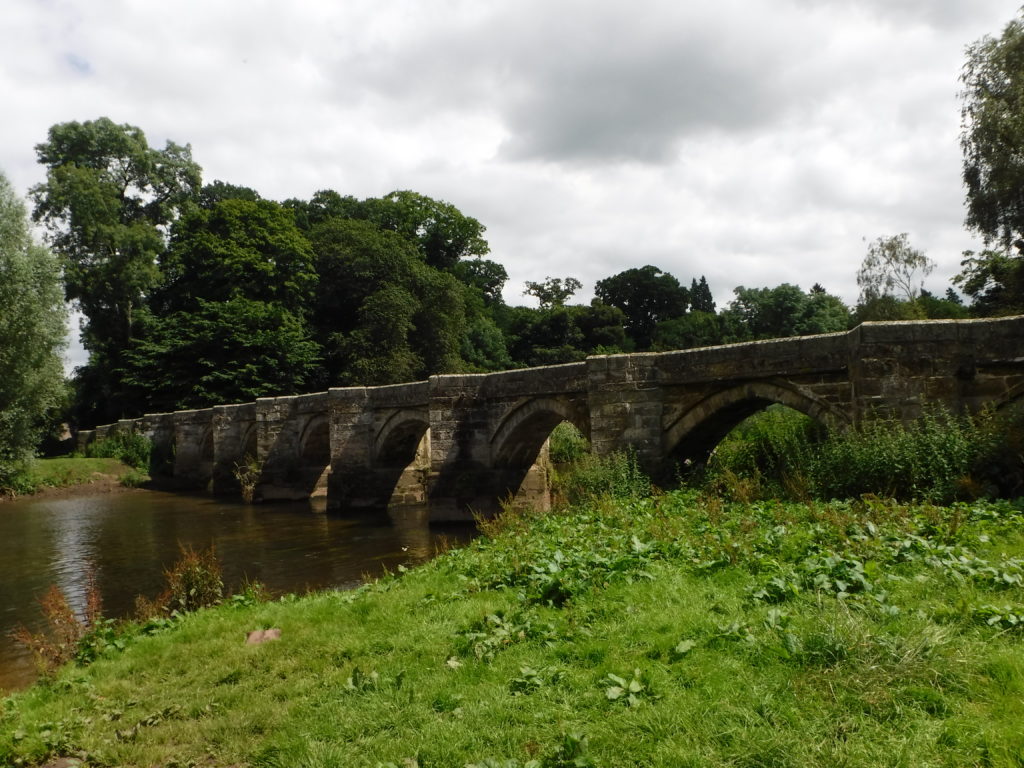
Personally I think that story is a bit of a fantasy, because the bridge has those triangular bits sticking out, which are passing places where a pedestrian could stand while a pack horse was coming the other way, whereas if Elizabeth I was coming the the other way you would be expected to dive in the river head first while tugging your forelock. Still, it’s the best preserved pack horse bridge in the country, so enjoy.
